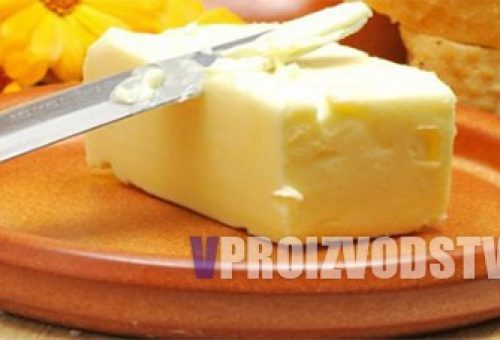How to open an industrial production of plastic bags
In this article:
Plastic bags are used everywhere: in supermarkets and shops, for standard and gift packaging, for food storage and garbage disposal.
All areas of application of plastic bags and do not list. Gone are the days when our compatriots preferred to use rag bags, and plastic bags were carefully folded and stored. Today, a plastic bag fulfills its main purpose - to be a disposable means for packaging and comfortable transportation of products. And this means that the demand for them will be stable and not prone to decline.
In addition to the obvious functions, packages have become a means of effective mobile advertising.- after all, almost every large company, boutique or supermarket has a branded package with the company's logo, a list of services and contact details that are distributed as a gift. And the client is pleased, and there is never too much advertising.
Analysis of the demand for products (plastic bags) and the sales market
According to statistics, there are enough unfilled niches in the market of domestic production, because 20% of polyethylene products continue to come from foreign manufacturers. At the same time, the main competitors of domestic entrepreneurs are Turkish and Chinese-made bags, which are distinguished by an extremely low price and appropriate quality. Torn handles, not completely soldered seams, falling out bottoms - just a small list of "charms" from buying such products. But for our consumer, the price has always been a decisive factor, so there is such competition, especially in the border regions.
However, this applies only to direct wholesale sales of finished products. It is much more profitable to work on order, concluding contracts for the supply of packaging material and ready-made packages for various trade, manufacturing, construction and agricultural enterprises. This is where the “company image” rule comes into play: no self-respecting company will offer the buyer a product in low-quality packaging.
Polyethylene products are in demand in any region. Moreover, even if a large plant is already operating in your city, medium and small businesses will freely find their niche by studying the offers of competitors. There are many types of plastic bags: banana bags, T-shirt bags, garbage bags, gift bags, promotional packaging with a logo, single-layer, multi-layer, various sizes, colors and shapes. The task of the entrepreneur is to find products with the highest demand, or to occupy a niche not covered by other manufacturers.
Choosing a strategy and legal registration of a business
Opening the production of plastic bags, you can go in two ways:
- full-cycle production (from film production to the production of packages of any configuration);
- partial production (from the purchase of finished film, applying images, cutting into forms with subsequent soldering).
Consider the full cycle as a more promising type of business. Although such an enterprise will require more capital investments, the marketing opportunities, the diversity of the products produced and, accordingly, the profitability will be much higher. In addition, such an enterprise can thus become a supplier of finished film for part-time production.
Possibilities of using the finished film:
- universal packaging material,
- building waterproofing,
- material for greenhouses, greenhouses and other needs of the agricultural sector,
- protection against pollution during construction or repair work.
The optimal organizational form for the production of polyethylene products is a legal entity on a simplified taxation system.
When registering an enterprise, you must specify the following OKVED codes:
- 25.2 - Manufacture of plastic products
- 25.22 - Manufacture of plastic products for packaging
- 51.47 - Wholesale of other non-food consumer goods.
To start the workshop, you will need a certificate for production, permits obtained from the local administration, sanitary-epidemiological and environmental services, energy supervision, and fire protection. The production of film for plastic bags must comply with GOST 10354-82 (food film certification is required to be confirmed every 3 months). But in order to obtain such a certificate, you must run production line(of course, after obtaining all permits for production), and provide the received samples for an expert opinion.
Plastic bag production facility
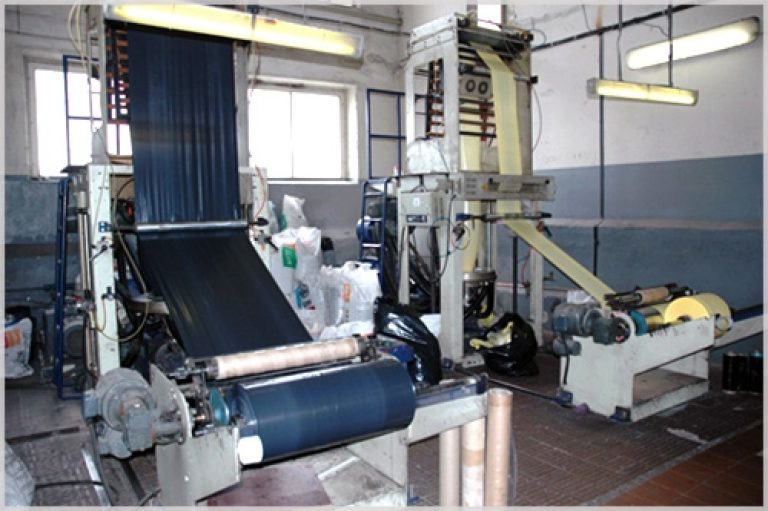
The production of plastic film is an environmentally harmful production, so there are a number of specific requirements for choosing a room:
- the production workshop or mini-factory should be located in an industrial or suburban non-residential area;
- the presence of supply and exhaust ventilation, heating and humidity control in the workshop and in the warehouse;
- three-phase electrical connection, grounding of batteries; - ceiling height of at least 8 m (extrusion machine height ~ 6 m), interior decoration of walls, floor, ceiling - from non-combustible materials;
- placement of production equipment in the shop premises must comply with GOST 12.3.002-74;
- the presence of a fire-fighting system, the possibility of safe evacuation in case of fire;
- the organization of workplaces must comply with the requirements of GOSTs 12.2.061-81 and 12.3.002-74, as well as ergonomic characteristics in accordance with GOSTs 12.2.033-78, 12.2.032-78.
To accommodate a complex of production equipment, a room of 300 square meters will be needed, which will be divided into three parts: a production workshop (180 m 2), a warehouse for raw materials and finished products (80 m 2), an office and an exhibition hall (40 m).
Equipment for the production of plastic bags
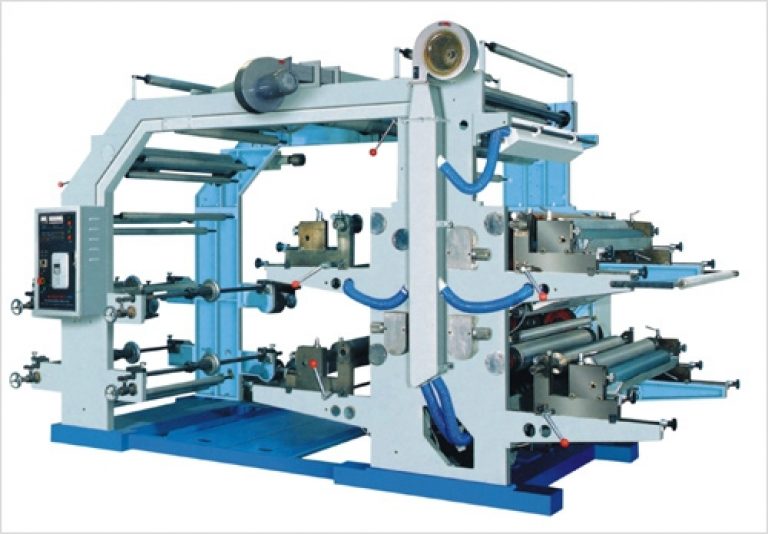
For the production of polyethylene film with the subsequent formation of bags, it is planned to purchase a production line consisting of the following equipment:

1) extruder– converter of raw material granules into a film (300-550 mm wide, 0.009-0.10 mm thick), by bottom-up blowing method. Productivity - 40 kg / hour;
2) Flexo printing machine– for printing drawings, logos and other images;
3) Plastic Clip Making Machine for Packaging;
4)Bag Making Multifunctional Machine, with a built-in punching press, equipped with a servo drive, a photosensor, a conveyor, thermal needles, and allowing the production of packages of various modifications, incl. T-shirt, banana, double-bottom bags, trash bags, food packaging with a plastic clip, etc.
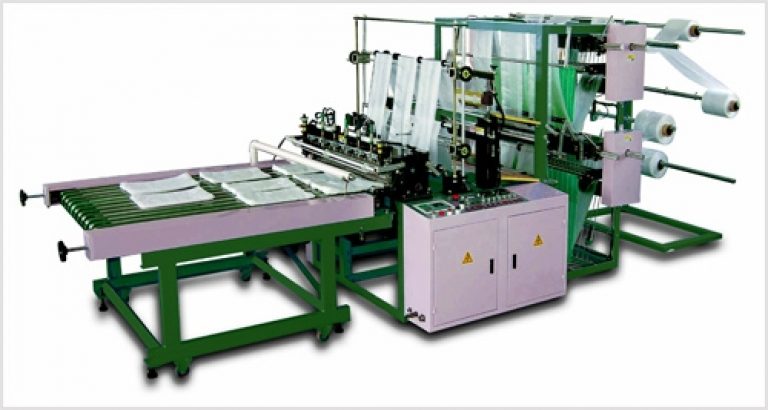
The cost of the production line with delivery, setup, staff training and signal launch is 3,840,000 rubles.
In addition to machine tools, it is planned to purchase office, exhibition and storage equipment (racks, boxes, boxes, tables, stands) for placing raw materials, finished products and equipping workplaces for staff. The cost of additional equipment for the workshop is 60,000 rubles.
Raw materials for the production of polyethylene bags
Polyethylene film is made from first grade or recycled polymer granules.
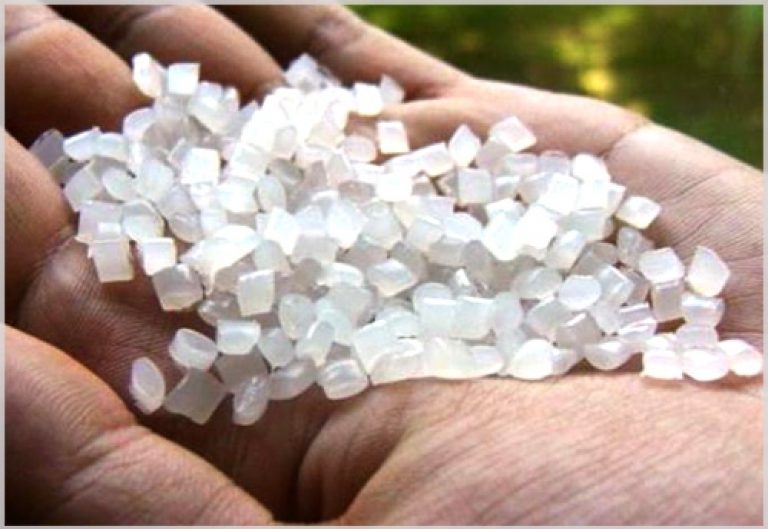
Two types of raw materials are used:
- HDPE (low pressure polyethylene, GOST 16338-85), for contact with loose and dry products;
- LDPE (high pressure polyethylene, GOST 16337-77), designed for food packaging).
South Korean granulate is recognized as the cheapest raw material (~ $ 380 per ton), but there are many other types of domestic or foreign production, with a price range from $ 420 to $ 750 per ton. To produce a color film, special dyes are added to the raw material ($ 15-50 per 1 kg).
At production of garbage bags or other types of non-food film, you can also use secondary granulate, which is much cheaper, because it is made from polyethylene waste, but the quality of such raw materials is correspondingly low.
Technology for the production of plastic bags
1. Polymer granules are loaded into extruder hopper from where the feed auger picks them up. Here, the temperature is maintained from 180 0 C to 240 0 C, and as they move, the granules are heated, melting into a homogeneous mass. As a result of extrusion, a polyethylene film is formed in the form of a pipe (sleeve). One extruder makes it possible to produce a film of various thicknesses and widths by special adjustment.

2. The polyethylene "pipe" is gradually cooled, then rolled out with rollers.

3. The sleeve is cut with an automatic knife so that two identical strips of the desired width are obtained.
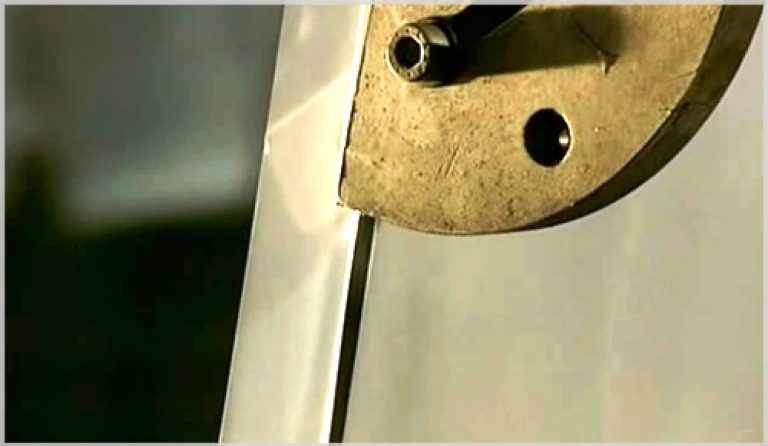
4. The winder winds the film into rolls (cuts are packed separately for recycling). When the width of the roll reaches the set size, the roll is moved away by the operator and the next one starts to be wound. And so on until the end of the produced film.

5. Drawing a picture. The paint is diluted with alcohol and constantly mixed so as not to lose viscosity.

6. With the help of a dispenser, the dye goes to special ink rollers, which print the pattern. After printing, the film is rewound into rolls.
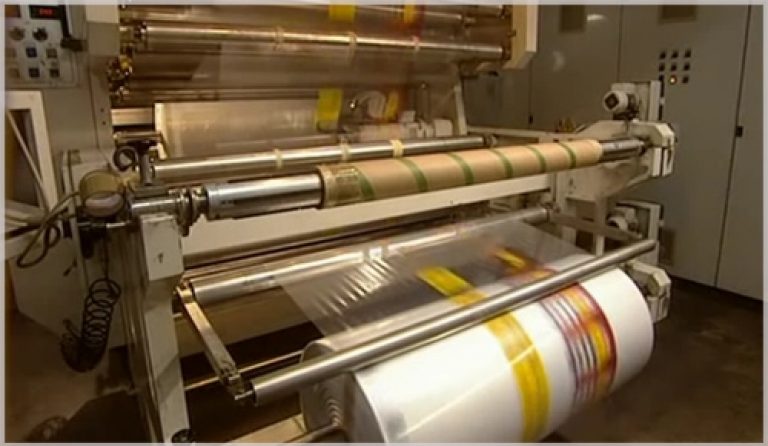
7. The finished roll enters the bag making machine, where a template for future bags is formed, the bottom fold is highlighted.
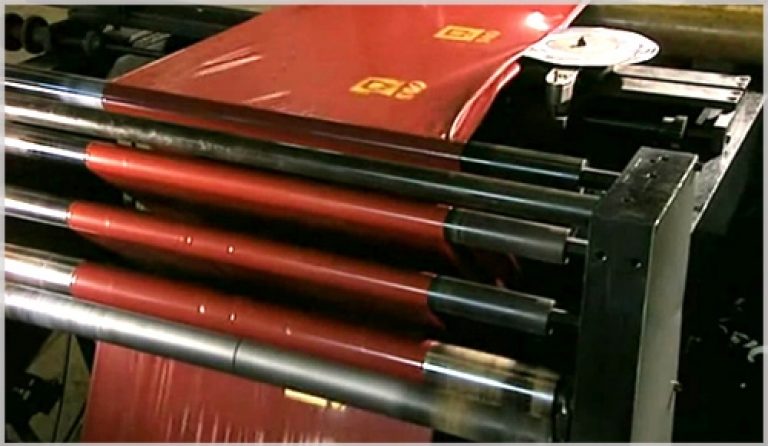
8. The stamping press makes holes for the handles (cuts out the “shirt”, cuts off the top to attach the plastic fastener - it all depends on the template).

9. The welding surface connects the edges, sealing with heating up to 180 0 С. Finished packages are formed into packs of 100 pieces.
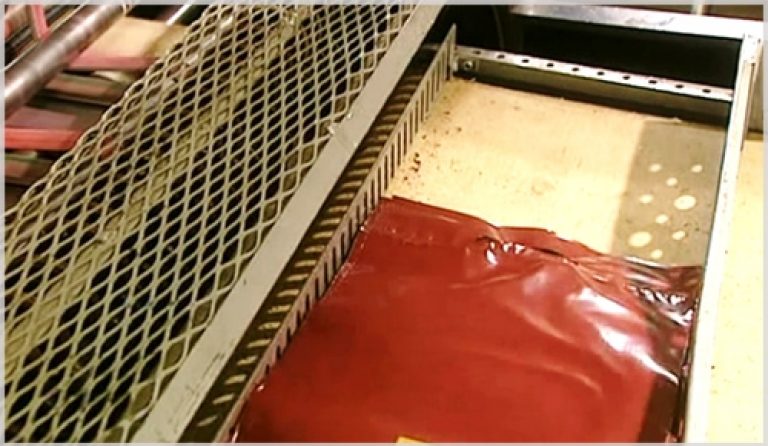
10. Quality control. Checking seams and fasteners.
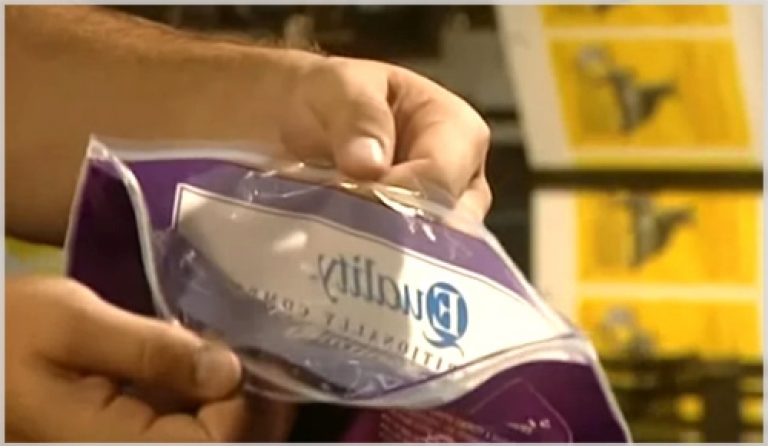
Business plan for the production of plastic bags
The cost of manufacturing plastic bags is calculated individually for each order, since in addition to the price of the used granulate, it depends on a number of additional factors:
- size, shape, package design,
- film density,
- the presence of a reinforced handle and bottom folds,
- color printing (the number of shades used, the area of the pattern, the presence of complex combinations, one-sided, two-sided printing, etc.).
To calculate the payback of a business project, let's take the production of white opaque bags with a die-cut handle, 40 cm wide, 60 cm high and 16 microns thick side fold.
The cost of such a package made from HDPE granules is 0.13 kopecks, and the wholesale price is 0.70 kopecks. Considering that the production capacity allows to produce about 70 pieces / minute, then with one-shift work and 22 working days, the profit will be: 60 minutes * 8 hours * 22 rubles / day * 70 pieces (0.70 - 0.13 rubles) \u003d 421 344 rubles / month.
Expenditure part:
- rent of a production workshop (300 m 2 * 150 rubles / m 2) = 45,000 rubles / month,
- electricity - 8,000 rubles / month,
- heating (for 6 months of the heating season, divided in equal parts for all months of the year),
- water and other utilities - 12,000 rubles / month,
- staff salary (6 people: director, accountant, technologist, 3 workers) - 128,000 rubles / month.,
- income tax (15% of profit minus expenses) - 34,252 rubles per month.
Total expenses: 227,252 rubles / month.
Net profit: 421 344 – 227 252 = 194,092 rubles/month.
Profitability calculation:
Initial investment (3,930,000 rubles):
- purchase of equipment - 3,840,000 rubles,
- additional equipment - 60,000 rubles,
- the cost of documenting the production (opening a law firm, obtaining the necessary permits and certification of products) - 30,000 rubles.
With an estimated profit of 194,092 rubles / month, the initial investment will pay off in 1 year and 9 months.
It should be borne in mind that the calculations were based on one of the simplest options for finished products, and everything depends on demand and sales opportunities in your region. For example, the sale price of color packages of the same parameters will be 15% higher, with one central one-color image - by 34% (with an increase in cost by 5 and 10%, respectively). In addition, the company can accept orders for the manufacture of LDPE or HDPE packages according to individual layouts, and the profitability of such projects is much higher.
